Who can see your post?
Your post will show up in News Feed, on your profile and in search results.5,716 Global Kavanagh Family Members
| Days | Hours | Minutes | Seconds |
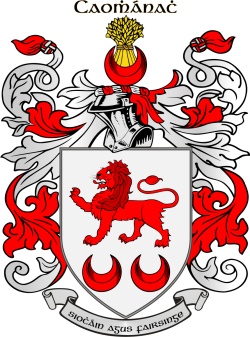
Sunday 21st April
2pm (New York), 7pm (Ire)
| Days | Hours | Minutes | Seconds |

Sunday 21st April
2pm (New York), 7pm (Ire)
Our in-person family gatherings
Our TEDx talk about family gatherings
Kavanagh Family History
Kavanagh, along with its variants Kavanaugh, Cavanagh and Cavanaugh, is the English version of the Irish word Caomhánach, meaning a ‘follower of (St) Caomhán’ or Kevin. It is one of the very few ancient Gaelic Irish surnames not to include Mac or O.
The name was first assumed by Domhnall Caomhánach (anglicised Donal Kavanagh) the natural son of the twelfth-century Diarmaid Mac Murchadha (Dermot MacMurrough), king of Leinster, because he had been fostered for his training and education at the monastery of St Caomhán at Kilcavan. Contrary to usual Irish practice, the name was adopted by his descendants as an inherited surname.
A majority of the Kavanagh families from the fifteenth century on descend from Art MacMurrough Kavanagh, King of Leinster, who died in 1418. The territory of the Kavanaghs during Art’s reign included nearly all of modern County Carlow, and most of north and north-west County Wexford and was known as ‘Kavanagh Country’. The chiefs of the family continued to take the ruling title mac Murchadha, but by the mid-sixteenth century their power was fading. It was definitively broken by the Plantation of North Wexford in 1610 when MacMurrough-Kavanagh land was confiscated by the Crown and colonised by settlers from England.
Sir William Petty’s ‘Census’ of 1659, gives an indication of the spread of Kavanagh households by the mid seventeenth century.
County Carlow
Forth Barony: Kavanagh (7); Idrone and St Mullins: Kavanagh (39); Rathvilly Barony: Kavenagh (5).
County Kildare
Naas Barony: Kavanagh (6); Salt Barony: Kavanagh (6); Kilkea and Moone Barony: Kavanagh (7).
County Kilkenny
Galmoy Barony: Kevanagh (7); Gowran Barony: Kevanagh (13) Fassadinin Barony: Kevanagh (10)
County Wexford
Forth Barony: Kavanagh (8); Bargy Barony: Kavanagh (6); Shelburne Barony: Kavanagh (9); Ballaghkeen Barony: Kavanagh (8); Gorey Barony (15).
By the mid nineteenth century the Kavanagh name was still to be found in significant numbers in counties Wexford (436 households), Wicklow (253 households), Kilkenny (185 households); Laois (170 households); Carlow (154 households) and Galway (109 households). Only in County Dublin did the Cavanagh spelling reach significant figures: Cavanagh (78); Kavanagh (83).
By 1900 Wicklow, Wexford and Dublin had the most Kavanaghs and Cavanaghs and the name was 53rd on a list of most prevalent surnames.
Some notable Wexford and Carlow Kavanaghs
Kavanagh, Patrick Fidelis (1838-1918), Franciscan priest and historian of the 1798 rebellion in Wexford, was born at Wexford on 14 March 1838, son of Lawrence Kavanagh, a shipowner and merchant, and Catherine Prendergast. His mother’s family had taken part in the 1798 Rebellion and one of the priests in the Rebellion, Michael Murphy was his maternal great uncle. Both his grandfathers fought on the rebel side throughout the campaign.
Kavanagh was educated at the Christian Brothers School in Wexford town and at St Peter's College where he distinguished himself academically. He enrolled at the Franciscan College in Rome and after his ordination in 1866 he returned to Wexford. After expressing pro-Fenian views to another priest, he was transferred to the order's Cork friary. At different times in his career Kavanagh was stationed at Cork, Limerick, Athlone, Carrick-on-Suir, and Galway.
In 1870 Kavanagh produced the first edition of the book for which he is mostly remembered, A popular history of the rebellion of 1798. The book combines oral evidence gathered by Kavanagh in north Wexford with material drawn from earlier apologetic works by Catholic writers such as Edward Hay and Thomas Cloney. In the book he argues that the United Irishmen barely existed in Wexford and that the rising represented a desperate people’s response to government tyranny. Kavanagh's book also played a decisive role in creating the popular image of Father John Murphy as foremost leader of the Wexford rising.
On the morning of 17 December 1918, Kavanagh died suddenly while praying in his cell at the friary in Wexford town. He is buried in the community graveyard there.
Kavanagh, Donal MacMurrough (Domhnall ‘Spáinneach’ MacMurchadha Caomháneach) (?–1632). Donal was the eldest of the two sons of Donnchadh, lord of the Art Buidhe Caomhánach family, who were probably the least powerful within the dynasty. Their lands lay north of Enniscorthy in the Backstairs Mountains in County Wexford. At Donnchadh's death, Donal was taken into the care of the seneschal or steward of Wexford, Thomas Stukeley. When Stukeley left for Spain in 1568, Donal went with him, hence his nickname, Spáinneach, meaning ‘of Spain’.
Donal returned to Ireland in the mid-1570s and became a leading member of his sept. He was a firm ally of Fiach McHugh O'Byrne until the latter's death in 1597. After O'Byrne's death, he allied with Hugh O'Neill. When the Nine Years' War ended in 1603, Donal submitted and was awarded a pension, as well as recognition of title to his lands.
Donal was married to Elizabeth O'Byrne (died c.1608), and Eleanor Kavanagh (died c. 1633), and had a total of six children. His only known brother was Cathaoir. His son and heir, Sir Morgan Kavanagh raised a regiment of the Catholic Confederates at the outbreak of the 1641 rebellion and was slain at the battle of Ballinvegga, Co. Wexford when Ormond defeated the Confederates on 18 March 1643.
Kavanagh, Arthur MacMurrough (1831-1889) was born 25 March 1831 at Borris House, Co. Carlow, the youngest son Thomas Kavanagh (1767–1837), landowner, and his second wife, Lady Harriet Le Poer Trench, daughter of the 2nd earl of Clancarty. Arthur was born with stumps for arms and legs but, helped by a dedicated family physician, Francis Boxwell, he came to lead an active and fulfilling life.
Boxwell designed a basket saddle which enabled Arthur from the age of two to sit up on a pony, and, in time, he learned to control the reins and became a skilled horseman. He learned to write with a pen in his mouth, and developed such control with his limbs that he could paint, sail, fish, and shoot with considerable competence; hunting was a particular passion. Educated from 1839 to 1843 among cousins at an academy run in Celbridge, Co. Kildare, by a distant relative, Dr Greer, Arthur excelled in his studies.
He travelled extensively throughout Europe and the East with his brothers, all of whom pre-deceased him. In March 1855 he married Frances Mary Leathley from Termonfeckin, Co. Louth, a distant cousin. They had 3 sons and 3 daughters. Arthur became Justice of the Peace for Carlow, Kilkenny, and Wexford, and was high sheriff of Kilkenny (1856) and Carlow (1857). Entirely devoted to his estate and his social duties, he often held an informal court for his tenants under the great oak tree at Borris House, dispensing justice as ‘part wise, part enlightened despot’
He stood as a conservative at the Wexford by-election of 1866 and won the seat. His impairment had not been an issue in the campaign and he was cheered when he was wheeled onto the floor of the house of commons to sign the register of new members. He made his maiden speech in April 1868 on the lack of lighthouses on the Wexford coast and the danger to shipping.
By 1880 Arthur's political career had come to a sudden end. At this time, poorer tenants were beginning to demand greater ownership of their land. Although Arthur was a fair landlord, he was a conservative man and was on the opposite side to his tenants in the Land War. His tenants voted against him and he lost his seat in the 1880 elections. With his political career over, Arthur's health began to suffer and he died on Christmas morning, 1889, aged 58.
Select Audience
-
Public
Anyone on or off Wales101 -
Friends
Your friends on Wales101 -
Specific
Only show to some friends -
Only me
Only you can see your post
Tag People
-
Kane William
-
John Micky
-
John william
-
John Smith
-
John
Create Life Event

Paul Kavanagh

thomas kavanaugh

Lori Walker

Kavanagh

Kavanagh

Kavanagh

Paul Kavanagh

Elliot O Caomhanach
Areas of Origin for Kavanagh
Invite more Kavanagh family members!
Write an email address and click 'Invite' to share this page with more members of the Kavanagh tribe.
Log in or Register to invite others
Family Coat of Arms Generator
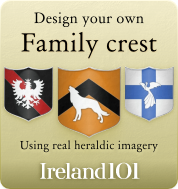
Why not see what your family crest could look like based on your own family characteristics?
Create CrestJoin the Irish Learning Rooms
Show off the Kavanagh Family Crest…
Wear your crest with pride...plenty of products to choose from


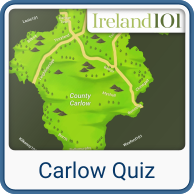

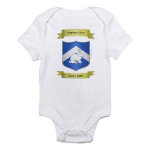
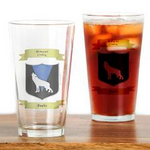

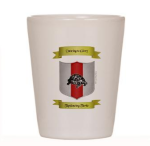

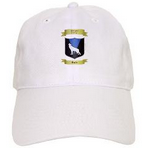
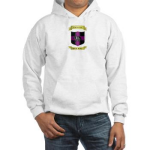
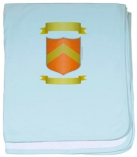
_(2).jpg)